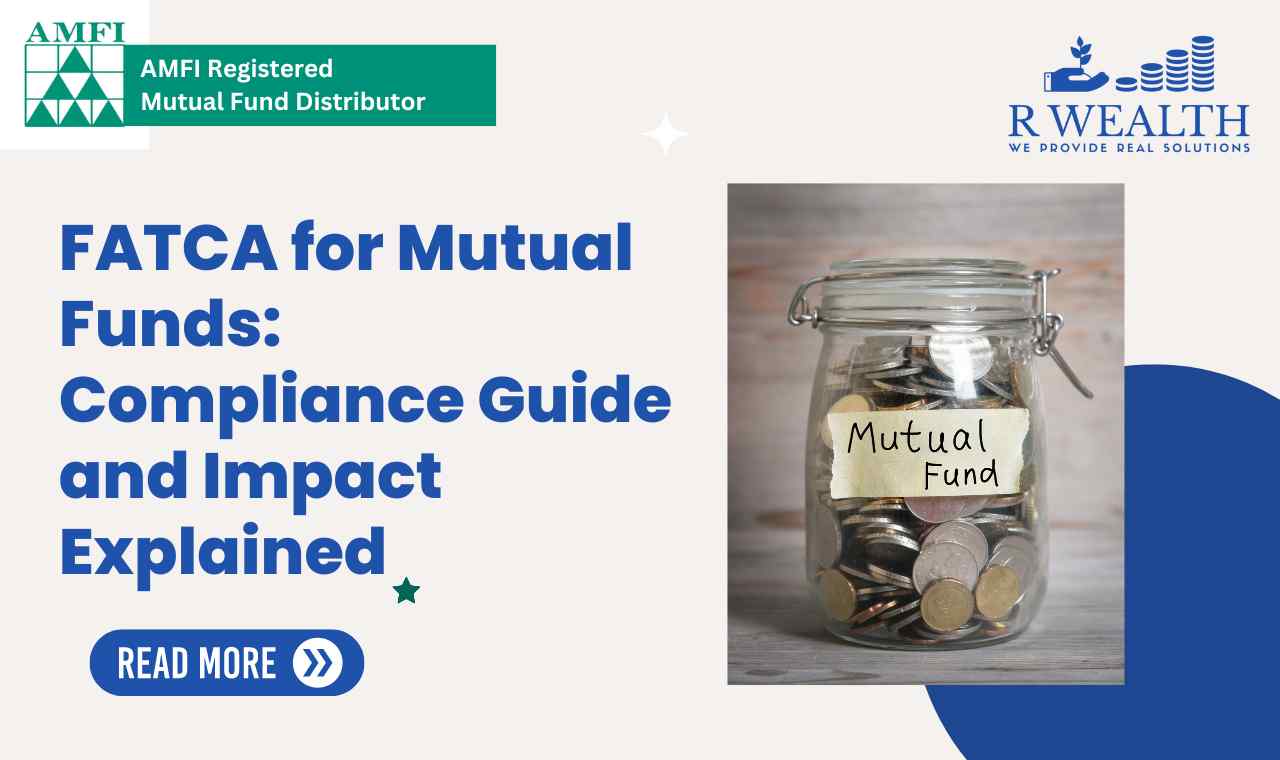
Are you looking for What is OTM in Mutual Funds? Well, in this article you will get to know everything about OTM (One-Time Mandate), its process, and its advantages. If you are an investor then you must know the benefits of OTM so that you can ease your investment journey.
What is OTM in Mutual Funds?
One Time Mandate (OTM) in mutual funds is an authorization given by an investor to the mutual fund house to debit the investor's bank account for a specified amount of money at a specific date or on a recurring basis for mutual fund transactions such as purchase, redemption, or systematic investment plan (SIP) contributions. This eliminates the need for the investor to issue cheques or make online fund transfers for each transaction.
This way, the investor can set up a recurring investment plan or make lump-sum investments without having to manually initiate each transaction.
An OTM also eliminates the risk of delayed or failed transactions due to insufficient funds, as the mutual fund house can automatically debit the specified amount from the investor's bank account. The OTM can be set up online or through a physical form, and the investor can change or cancel the OTM at any time.
Read More: Difference Between Dividend and Growth Mutual FundsÂ
Process of OTM (One Time Mandate):
- Setting up the OTM: To set up the OTM, the investor must first open an account with the mutual fund house and complete the necessary documentation. The investor can then request to set up an OTM through the mutual fund house's website or through a physical form. The investor will need to provide personal information, including their bank account details and a copy of their canceled cheque or a bank statement.
- Authorizing the OTM: Once the investor has completed the necessary paperwork, they must authorize the OTM. This can be done by providing a signature, an electronic signature, or by sending an SMS or email from the registered mobile number or email address.
- Specifying the details: The investor must then specify the details of the OTM, including the amount to be debited, the frequency of the debit (e.g. monthly, quarterly), and the date of the first debit. The investor can also specify the number of transactions or the duration of the OTM.
- Confirming the OTM: Once the OTM is set up and authorized, the mutual fund house will send a confirmation to the investor, which should be reviewed and retained for future reference.
- Monitoring the OTM: The investor should monitor the OTM to ensure that the debits are occurring as planned. The mutual fund house will also send transaction statements to the investor, which should be reviewed to ensure that the debits are accurate and that there are no errors.
- Canceling or changing the OTM: If the investor wishes to cancel or change the OTM, they can do so by contacting the mutual fund house and providing the necessary documentation. The mutual fund house will then process the cancellation or change and send a confirmation to the investor.
Overall, the OTM is a convenient way for investors to make mutual fund transactions without having to manually initiate each one. It eliminates the risk of delayed or failed transactions and provides a streamlined, automated process for making investments.
However, it is important for investors to monitor their OTM and review transaction statements to ensure that the debits are accurate and that there are no errors.
Read More: Gold Mutual Funds vs Gold ETF
Advantages of One Time Mandate:
- Convenience: One of the main advantages of OTM is the convenience it offers to investors. It eliminates the need for the investor to issue cheques or make online fund transfers for each transaction, which can save time and effort.
- Automatic Transactions: OTM allows for automatic transactions, which eliminates the risk of delayed or failed transactions due to insufficient funds. The mutual fund house can automatically debit the specified amount from the investor's bank account on a specified date or on a recurring basis.
- Flexibility: OTM allows investors to make transactions on a recurring basis such as purchase, redemption, or systematic investment plan (SIP) contributions. This allows the investor to set up a recurring investment plan or make lump-sum investments without having to manually initiate each transaction.
- Better record keeping: OTM allows investors to keep better records of their investments and transactions as the mutual fund house sends transaction statements to the investor, which should be reviewed to ensure that the debits are accurate and that there are no errors.
- Reduced errors: OTM eliminates the possibility of errors that can happen during manual transactions. The mutual fund house will automatically debit the specified amount from the investor's bank account on the specified date or on a recurring basis, which reduces the risk of errors.
- Easy cancellation or change: If the investor wishes to cancel or change the OTM, they can do so by contacting the mutual fund house and providing the necessary documentation. The mutual fund house will then process the cancellation or change and send a confirmation to the investor.
Overall, OTM is a convenient and efficient way for investors to make mutual fund transactions. It eliminates the need for manual initiation of transactions, reduces errors, and provides better record keeping. It also allows the investors to make transactions on a recurring basis, which can be beneficial for investors who want to set up a recurring investment plan or make lump-sum investments.
Read More: Is Demat Account Required for Mutual Funds
Frequently Asked Question About OTM (One Time Mandate)
- What is One Time Mandate (OTM) in mutual funds?
- How do I set up an OTM in mutual funds?
- Can I cancel or change my OTM in mutual funds?
- How often can I make transactions through OTM in mutual funds?
- Can I make a lump-sum investment through OTM in mutual funds?
- Do I need to keep track of my OTM transactions in mutual funds?
- Is there a limit on the amount that can be debited through OTM in mutual funds?
- Is OTM only available for systematic investment plans (SIP)?
- How do I know if my OTM transaction is successful in mutual funds?
- Will my OTM transaction be affected if there are insufficient funds in my bank account?
- Can I set up OTM for multiple mutual funds?
- Is there any additional charge for using OTM in mutual funds?
One Time Mandate (OTM) is an authorization given by an investor to the mutual fund house to debit the investor's bank account for a specified amount of money at a specific date or on a recurring basis for mutual fund transactions such as purchase, redemption, or systematic investment plan (SIP) contributions.
To set up an OTM, the investor must first open an account with the mutual fund house and complete the necessary documentation. The investor can then request to set up an OTM through the mutual fund house's website or through a physical form.
Yes, if the investor wishes to cancel or change the OTM, they can do so by contacting the mutual fund house and providing the necessary documentation. The mutual fund house will then process the cancellation or change and send a confirmation to the investor.
The investor can specify the frequency of the debit (e.g. monthly, quarterly), and the date of the first debit. The investor can also specify the number of transactions or the duration of the OTM.
Yes, OTM allows investors to make transactions on a recurring basis such as purchase, redemption, or systematic investment plan (SIP) contributions. This allows the investor to set up a recurring investment plan or make lump-sum investments without having to manually initiate each transaction.
Yes, the investor should monitor the OTM to ensure that the debits are occurring as planned. The mutual fund house will also send transaction statements to the investor, which should be reviewed to ensure that the debits are accurate and that there are no errors.
The mutual fund house may have a minimum and maximum limit on the amount that can be debited through OTM. It is important to check this with the mutual fund house before setting up the OTM.
No, OTM can be used for a variety of transactions such as purchase, redemption, or systematic investment plan (SIP) contributions.
The mutual fund house will send a confirmation of the transaction to the investor. The investor should also review their bank statement to ensure that the debit has occurred.
No, the mutual fund house will not debit the specified amount from the investor's bank account if there are insufficient funds. The investor will need to ensure that there are sufficient funds in their bank account before the debit date.
Yes, an investor can set up OTM for multiple mutual funds, as long as they have an account with each fund house.
The mutual fund house may charge a fee for setting up and maintaining the OTM. It is important to check with the mutual fund house for any additional charges before setting up the OTM.
Latest Blogs

Difference Between Dividend and Growth Mutual Funds | RWealth
Is there any difference between dividend and growth mutual funds? is a dilemma for every... Read More

SIP vs One Time Investment in Mutual Fund
Which is the better option in SIP vs one time investment in Mutual fund? If you have decided to... Read More

FATCA for Mutual Funds: Compliance Guide and Impact Explained
The Foreign Account Tax Compliance Act (FATCA) is a significant piece of legislation enacted by the... Read More

XIRR in Mutual Funds: A Guide for Indian Investors 2023
Investing in mutual funds has become increasingly popular among individuals seeking long-term... Read More

What is FMP in Mutual Funds? Key Features and Benefits etc
In the ever-evolving world of mutual funds, one term that often piques the curiosity of investors is... Read More

What Is Treps in Mutual Funds: Explained and Analyzed
Are you familiar with TREPS in mutual funds? In the Indian investment landscape,... Read More

What is EUIN in Mutual Funds? Understanding Its Significance
Have you ever come across the term "EUIN" while exploring mutual funds? If you find yourself puzzled... Read More

What Is OTM in Mutual Funds? Top 6 Benefits Of OTM
Are you looking for What is OTM in Mutual Funds? Well, in this article you will get to know everything... Read More


